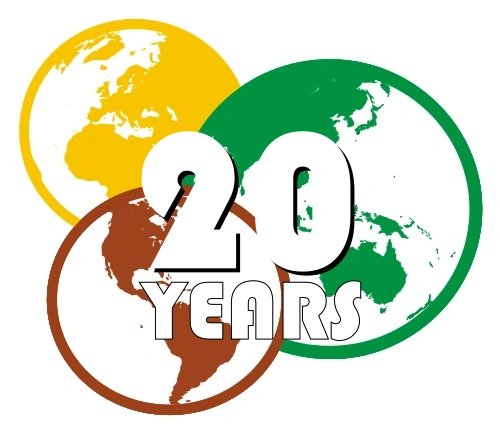Concordia Res Parvae Crescunt (Latin) ("Small Things Grow Through Unity") | |||||
| Anthem | "Het Wilhelmus" | ||||
| Capital (and largest city) |
Amsterdam | ||||
| Other cities | Antwerp, Rotterdam, Groningen | ||||
| Language official |
Dutch | ||||
| others | Zeelandic (in Zeeland), Frisian (in Frisia), Gronings (in Groningen), Dutch Low Saxon (in Overijssel), Papiamentu (in the Dutch Antilles), several in the Dutch East Indies | ||||
| Religion main |
Protestantism | ||||
| others | Islam, Buddhism, Hinduism (in the Dutch East Indies) | ||||
| Demonym | Dutch | ||||
| Government | Federal Presidential Republic | ||||
| Established | 23 November 1921 | ||||
| Currency | Dutch guilder | ||||
The Netherlands (Dutch: Nederland), officially the Republic of the United Netherlands (Dutch: Republiek der Verenigde Nederlanden), is a sovereign state of Western Europe, but its colonial empire extends to the Americas and Asia. The metropolitan area of the country borders with Germany to its east, the Atlantic Ocean to its north, France to its east and Belgium to its south.
Historically a republic, then a monarchy, then a republic again, the Netherlands' long and troubled history begins in the 16th century, when the provinces that would form the country revolted against and seceded from the Habsburg empire. Since then, the Netherlands have always been, with varied outcomes, at the forefront of European politics: the Orange-Nassau monarchy was overthrown by an alliance of republicans, socialists and even right wing parties during the Great War, because of the monarchist government's fervent neutralist stance.
Despite being a relatively small nation, the Netherlands have always been a commercial and naval powerhouse. The nation's colonial empire is made up of the colony of Surinam and the two colonial federations of the Dutch Antilles and the Dutch East Indies: the latter is truly the crown jewel of the Dutch empire, as it is not only the largest Dutch colonial possession, but also the most profitable, as it is used for production and trade of spices, precious metal, and other valuable resources.
Recent History[]
The Kingdom of the Netherlands, in the middle of the Great War, was in a precarious situation. After the first phase of the war was over, many, including the centrist government of the Netherlands, were convinced that hostilities were dying down, and that the war was almost over. The situation became critical again when German forces entered Austrian territory, and later annexed it, before releasing some of the states once part of the Habsburg domains (such as Hungary and Jugoslavia) and giving some of its other territories to Italy.
Germany justified this act saying that Austria-Hungary had already collapsed, and that such an intervention was necessary to prevent further bloodshed. However, this act was unilaterally carried out by German forces, without consent or information given to other European powers. The allies, now reduced to France and Great Britain, considered this an act of war and a violation of the truce.
In the Netherlands, it became increasingly clear that Germany was about to attack France and the Netherlands as well. The government kept a neutralist stance, but many parties in the Kingdom feared that such a pacifist stance would mean nothing when German boots crossed the border and occupied the country. Many proposed a pre-emptive alliance with Germany. In the next elections, the pro-war parties won, but in the midst of heated conflict, which included riots and clashes between pro-peace and pro-war factions. The situation was further made critical when the Queen of the Netherlands held a public pro-peace speech. Amsterdam erupted into a small civil war: in the end, pro-war factions and militias stormed the royal palace and declared the creation of the Republic. Later, the newborn republican government entered the war on the German side, gaining some territories and concessions in exchange (most importantly Flanders), and managing not to be occupied or invaded by any foreign force.
Government and Politics[]
Constitution and Laws[]
The Netherlands are a presidential federal republic: according to the constitution, each state can govern itself to a certain degree, but most power is in the hands of the stadtholder (Dutch: stadhouder), who is chief of the executive branch of the government. The legislative branch is embodied by the States General of the Netherlands (Dutch: Staaten-Generaal), a bicameral parliament made up of a Senate (Dutch: Eerste Kamer) and a House of Representatives (Dutch: Tweede Kamer), and by the Council of State (Dutch: Raad van State), a separate advisory body; the States General are made up from representatives of each province, while members of the Council of State are elected by all of the Netherlands.
With the exception of Suriname, which is administered individually as an overseas province of the Netherlands, the Dutch colonial empire is subdivided into two colonial federations, the Dutch East Indies and the Dutch Antilles. Each of these federation is largely autonomous from the homeland.
Subdivisions[]
The Republic of the United Netherlands is made up of twelve provinces (Dutch: provinciën, singular provincie), one colony (Dutch: kolonie) and two colonial federations (Dutch: federaties koloniaal).
Provinces[]
- Brabant

- Drenthe
- Flanders
- Guelders
- Holland
- Flevoland
- Frisia
- Groningen
- Limburg
- Overijssel
- Utrecht
- Zealand
Colony[]
Colonial Federations[]
- Dutch Antilles
- Dutch East Indies


